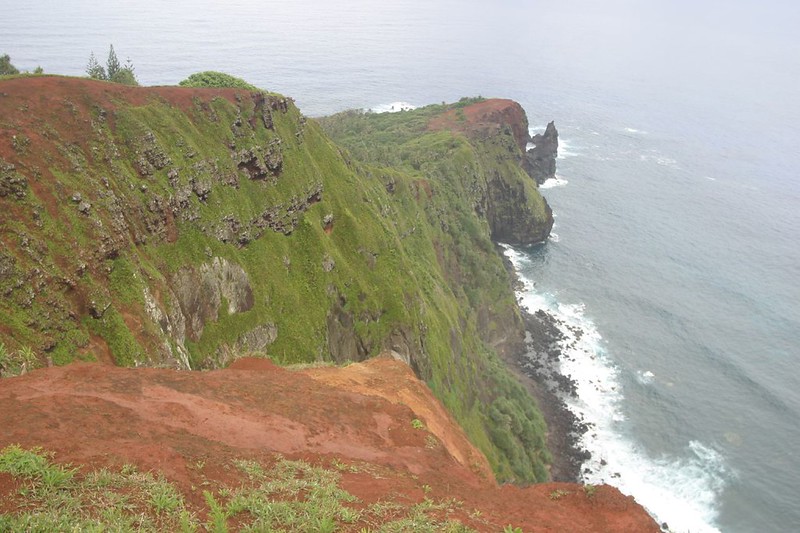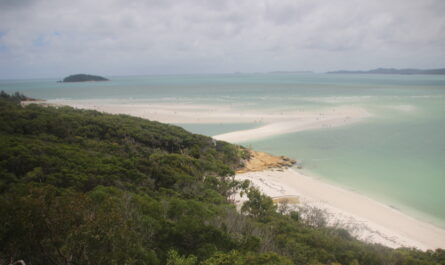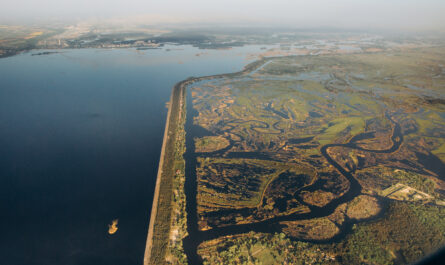The Pitcairn Islands, a remote group of islands in the South Pacific Ocean, are most famously known as the final refuge of the HMS Bounty mutineers. The islands are synonymous with the historical event known as the Mutiny on the Bounty, which occurred in 1789. This mutiny, led by Fletcher Christian, against the ship’s captain, William Bligh, became one of the most renowned rebellions in maritime history. The mutineers eventually settled on Pitcairn Island, a small and isolated landmass, marking the beginning of an enduring legacy that has shaped the identity of the island and its inhabitants.
This article delves into the dramatic events of the Mutiny on the Bounty, the establishment of a new community on Pitcairn Island, and how the descendants of the mutineers continue to live today, confronting challenges in one of the most isolated settlements in the world.
1. The Mutiny on the Bounty: A Rebellion at Sea
The HMS Bounty, a small British naval ship, was sent on an expedition in 1787 to collect breadfruit plants from Tahiti and transport them to the Caribbean as a cheap food source for slaves. After a five-month stay in Tahiti, where the crew enjoyed a more relaxed and idyllic lifestyle, the situation drastically changed once the ship set sail again.
Captain William Bligh, known for his strict discipline, clashed with many crew members, particularly his second-in-command, Fletcher Christian. Tensions escalated as Bligh’s leadership style, which many perceived as excessively harsh and authoritarian, led to resentment among the crew. Bligh’s strict enforcement of rations and punishments became the catalyst for the mutiny, as Christian and several of his fellow sailors revolted against the captain.
On April 28, 1789, Christian and his followers seized control of the Bounty, setting Bligh and 18 loyalists adrift in a small launch with limited provisions. Remarkably, Bligh navigated this small boat across 4,000 miles of open sea to safety, eventually making it back to England. However, Christian and his fellow mutineers sailed the Bounty back to Tahiti.
2. The Journey to Pitcairn Island
While some of the mutineers remained in Tahiti, fearing that they would be caught by British authorities, Christian and nine other mutineers, along with several Tahitian men and women, decided to seek out a more secluded refuge. After searching for a remote location far from the well-traveled shipping routes, they came upon Pitcairn Island, which had been incorrectly charted by European navigators. This made the island an ideal hideout, as it was unlikely to be discovered by the British Navy.
Upon reaching Pitcairn in 1790, the mutineers burned the Bounty, scuttling the ship in Bounty Bay to prevent its detection. This act of destruction symbolized the end of their old lives and the beginning of a new, isolated existence on the island. The community they established would soon be marked by both turmoil and survival.
3. Conflict and Survival on Pitcairn
The early years on Pitcairn Island were marked by violent conflicts among the mutineers and their Tahitian companions, particularly over issues related to resources and relationships with the women on the island. These tensions led to a series of violent confrontations, which left many of the original settlers dead within the first few years of settlement.
Despite the initial violence, John Adams, the last surviving mutineer, managed to restore peace on the island. He implemented a system of governance based on Christian values, introducing religious instruction to the island’s inhabitants. Adams’s leadership helped transform the community into a stable society, allowing the descendants of the mutineers and their Tahitian companions to thrive. His influence was so profound that the islanders continue to revere Adams as a founding figure.
4. The Legacy of the Mutiny on the Bounty
The legacy of the Mutiny on the Bounty remains deeply woven into the cultural fabric of Pitcairn Island. The island’s population is largely descended from the original mutineers and the Tahitian men and women who accompanied them. Today, fewer than 50 people live on the island, yet they maintain the oral traditions and historical narratives passed down from their ancestors.
One of the most enduring symbols of the island’s legacy is the remnants of the Bounty, which still lie submerged in Bounty Bay. Pieces of the ship, along with various relics from the early settlers, can be found in Adamstown, the island’s only settlement, which serves as the capital of Pitcairn.
Pitcairn’s unique history has fascinated historians and filmmakers for centuries, with the mutiny inspiring countless books, films, and television adaptations. Perhaps most famously, the story has been told in movies like “Mutiny on the Bounty” (1935) starring Charles Laughton and Clark Gable, and later adaptations with Marlon Brando and Mel Gibson. These representations have helped cement the story of the Bounty in popular culture.
5. Modern Life on Pitcairn Island
Life on Pitcairn Island today is a blend of tradition and modern challenges. The island’s remote location, situated more than 3,000 miles from New Zealand, makes it one of the most isolated settlements in the world. Pitcairn’s population, largely made up of descendants of the mutineers, faces difficulties due to limited access to resources, healthcare, and education. The island is reliant on subsistence farming, fishing, and occasional tourism for economic survival.
Tourism plays a small but important role in the island’s economy, with visitors drawn by Pitcairn’s rich history and natural beauty. Tourists can explore the Bounty’s wreck, hike the island’s rugged terrain, and learn about the lives of the island’s inhabitants. However, limited infrastructure and accessibility pose significant challenges to increasing tourism.
Despite these hardships, Pitcairn’s residents maintain a strong sense of community and pride in their heritage. The island’s rich cultural history, combined with its stunning landscapes and unique way of life, continue to captivate the imaginations of those who visit or study the island.
6. Preservation of the Pitcairn Legacy
Efforts to preserve Pitcairn’s unique heritage are ongoing. The island’s government, with support from the United Kingdom, has taken steps to protect historical sites and maintain the island’s cultural legacy. Additionally, there have been recent moves to digitize records and oral histories, ensuring that the story of the Bounty mutineers is preserved for future generations.
Pitcairn’s small population and remote location make these preservation efforts both urgent and challenging. As the island continues to grapple with population decline and economic difficulties, safeguarding its heritage remains a top priority.
Conclusion: Pitcairn’s Legacy in the Modern World
The Mutiny on the Bounty and its aftermath left an indelible mark on the Pitcairn Islands. Today, the descendants of the mutineers live on, preserving the traditions, stories, and struggles of their forebears. The island itself stands as both a symbol of rebellion and a testament to survival in the face of isolation.
While modern challenges loom over Pitcairn, the spirit of the island’s community remains strong. Whether through historical tourism, preservation efforts, or oral traditions, the legacy of the Mutiny on the Bounty continues to shape the identity of this remote corner of the world, ensuring that the story of Pitcairn and its people endures.



